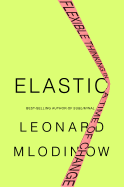
We are taught that analytical thinking is the appropriate response to situations that require a problem to solve. However, a deliberate, step-by-step approach is not particularly well-suited for the rapid changes of the 21st century. Instead, physicist and author Leonard Mlodinow urges us to embrace elastic thinking if we want to thrive in this unprecedented age of change.
Thanks to our advanced brains, elastic thinking was key to the evolution of the human species. In today's world, where "we consume, on average, a staggering 100,000 words each day from various media," our tolerance for new information, constant progress and creative solutions is achievable thanks to elastic thinking's bottom-up approach to problem solving. While our top-down analytical brains dismiss unusual or seemingly illogical solutions to problems, our elastic brains allow us to consider ideas from different angles. Daydreaming, or "thinking without thinking," is crucial to the development of new ideas; Mary Shelley was unable to rise to the challenge of telling a ghost story until she let her mind wander and conceive Frankenstein. Just as important, frozen thinking--or thinking that resists "accepting nonconformist ideas"--stands in our way, as illustrated by General Stanley McChrystal's analysis of how Israel failed to anticipate obvious warning signs leading up to the Yom Kippur War.
With humor and insight, Mlodinow (a former writer for MacGyver and Star Trek: The Next Generation) takes readers for a tour of the brain and provides opportunities to test our own thinking with riddles, puzzles and quizzes. With elastic thinking, you'll never approach a problem the same way again. --Frank Brasile, librarian

